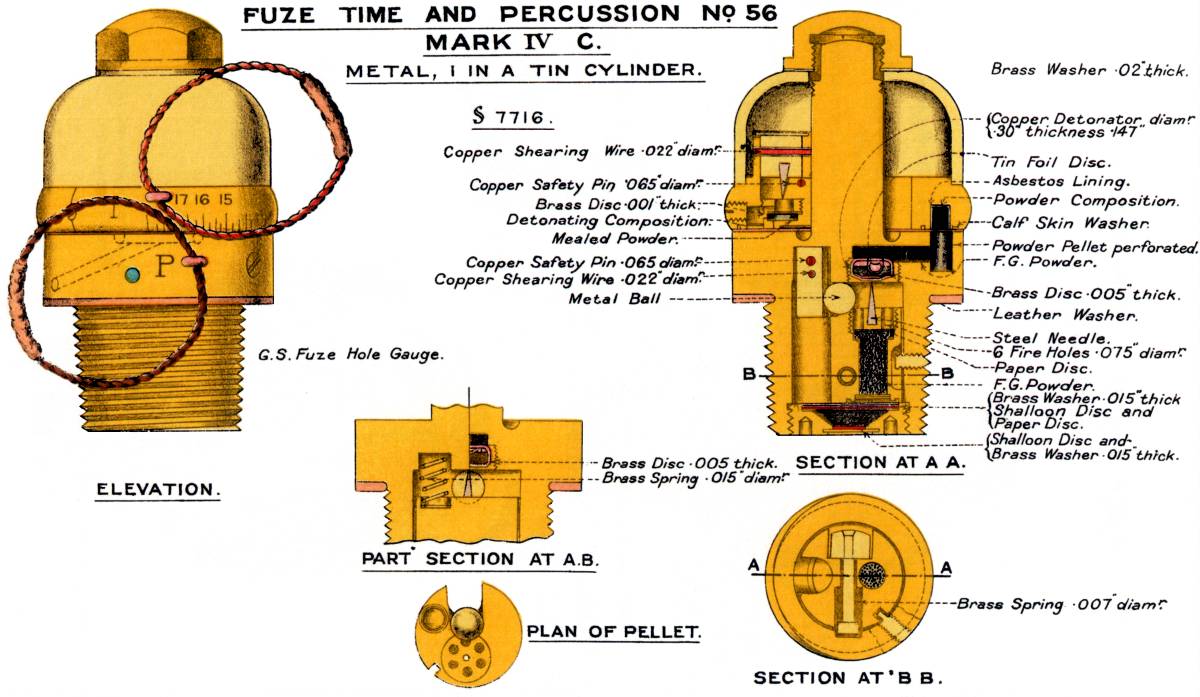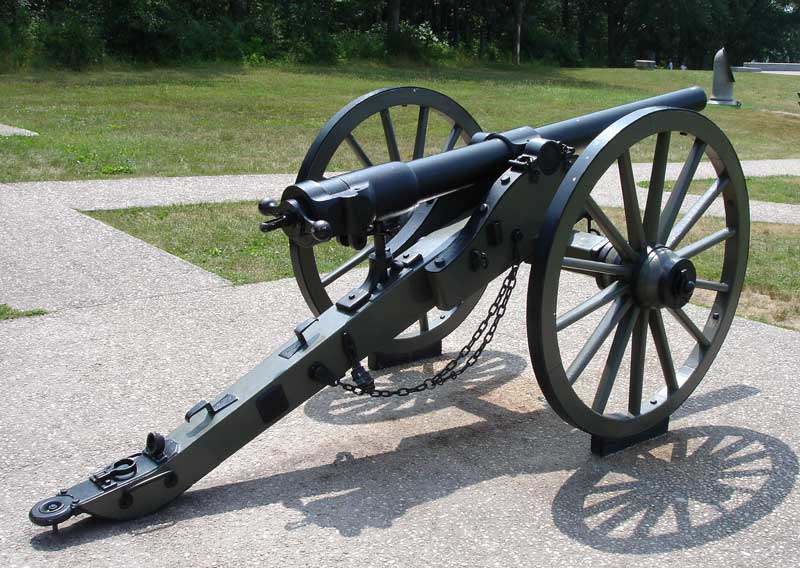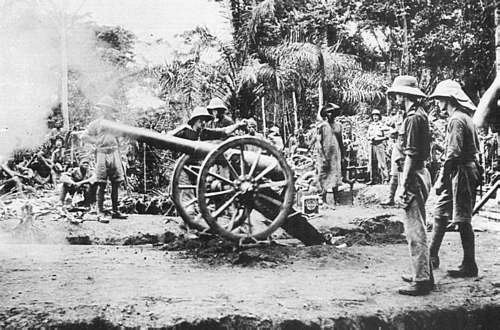|
12 Pounder Gun
12-pounder gun or 12-pdr, usually denotes a gun which fired a projectile of approximately 12 pounds. Guns of this type include: *12-pounder long gun, the naval muzzle-loader of the Age of Sail *Canon de 12 de Vallière, French cannon of 1732 *Canon de 12 Gribeauval, French field cannon of the mid-late 18th century *Canon lourd de 12 Gribeauval, French heavy cannon of the mid-late 18th century *Canon obusier de 12, French 12-pounder cannon-howitzer of 1853. Known in the US as "12 pounder Napoleon" * M1841 12-pounder howitzer, American howitzer having the same caliber (4.62 inches) as a 12-pounder field gun *One of the Dahlgren guns of the American Civil War *Ordnance BL 12 pounder 7 cwt, British field gun, 1885–1892 *Ordnance QF 12 pounder 8 cwt, British naval landing gun, late 19th century and early 20th century *Ordnance BL 12 pounder 6 cwt, British light field gun, 1894–1916 * QF 12 pounder 12 cwt naval gun, British "Long 12" of 1890s–1940s *QF 12 pounder 12 cwt AA gun, Bri ... [...More Info...] [...Related Items...] OR: [Wikipedia] [Google] [Baidu] |
12-pounder Long Gun
The 12-pounder long gun was an intermediary calibre piece of artillery mounted on warships of the Age of sail. They were used as main guns on the most typical frigates of the early 18th century, on the second deck of fourth-rate ships of the line, and on the upper decks or castles of 80-gun and 120-gun ships of the line. Naval 12-pounders were similar to 12-pound Army guns in the Gribeauval system: the canon lourd de 12 Gribeauval, used as a siege weapon, and the canon de 12 Gribeauval, which was considered a heavy field artillery piece. Usage As the 12-pounder calibre was consistent with both the French and the British calibre systems, it was a widespread gun amongst nations between the 17th and the 19th century. From the late 18th century, the French Navy used the 12-pounder in three capacities: as main gun on early frigates under Louis XIV, on standard frigates under Louis XV and on light frigates under Louis XVI; as secondary artillery on 64-gun ships; to arm the castles of ... [...More Info...] [...Related Items...] OR: [Wikipedia] [Google] [Baidu] |
Ordnance BL 12 Pounder 6 Cwt
The Ordnance BL 12-pounder 6 cwtBritish military traditionally denoted smaller ordnance by the weight of its standard projectile, in this case approximately . "6 cwt" referred to the weight of the gun and barrel to differentiate it from other "12-pounder" guns. One hundredweight (cwt) is , so the total weight was was a lighter version of the British 12-pounder 7 cwt gun, used by the Royal Horse Artillery in the late 19th and early 20th centuries. History Problems arose when the standard BL 12-pounder 7 cwt gun was used in the great Indian cavalry manoeuvres of 1891. The carriage was found to be too complicated, and dust caused the metal surfaces of the axle traversing device to seize. It also proved too heavy for horse artillery, which was intended to support cavalry in battle, to manoeuvre. The 12-pounder 6 cwt gun was therefore developed in 1892, when the new more powerful cordite replaced gunpowder, as a lighter version of the BL 12-pounder 7 cwt gun. It had a barrel shor ... [...More Info...] [...Related Items...] OR: [Wikipedia] [Google] [Baidu] |
Naval Artillery In The Age Of Sail
Naval artillery in the Age of Sail encompasses the period of roughly 1571–1862: when large, sail-powered wooden naval warships dominated the high seas, mounting a large variety of types and sizes of cannon as their main armament. By modern standards, these cannon were extremely inefficient, difficult to load, and short ranged. These characteristics, along with the handling and seamanship of the ships that mounted them, defined the environment in which the naval tactics in the Age of Sail developed. Firing Firing a naval cannon required a great amount of labour and manpower. The propellant was gunpowder, whose bulk had to be kept in the magazine, a special storage area below deck for safety. ''Powder boys'', typically 10–14 years old, were enlisted to run powder from the magazine up to the gun decks of a vessel as required. A typical firing procedure follows. A wet swab was used to mop out the interior of the barrel, extinguishing any embers from a previous firing whic ... [...More Info...] [...Related Items...] OR: [Wikipedia] [Google] [Baidu] |
Twelve-pound Cannon
The twelve-pound cannon is a cannon that fires twelve-pound projectiles from its barrel, as well as grapeshot, chain shot, shrapnel, and later shells and canister shot. It was first used during the Tudor period and was commonly used during the Napoleonic Wars, 1799–1815. At this time 12-pounders were the largest caliber of long-barreled field pieces, and were used both at long range against fortifications and troop concentrations using round shot and against attacking infantry and cavalry using canister shot. As such the 12-pounder was a favorite weapon of the Grande Armée. Later, redesigned 12-pounders were named after Napoleon III and found heavy use during the American Civil War. Twelve-pounders were also carried on naval vessels of various sizes. Unlike their land-based cousins, such weapons were considered light by naval standards. They formed the main armament of smaller frigates, and were used on the upper decks of larger vessels, where their relatively lighter weight ... [...More Info...] [...Related Items...] OR: [Wikipedia] [Google] [Baidu] |
RBL 12 Pounder 8 Cwt Armstrong Gun
The Armstrong Breech Loading 12 pounder 8 cwt, later known as RBL 12 pounder 8 cwt, was an early modern 3-inch rifled breech-loading field gun of 1859. Design The gun incorporated some advanced features for its day. It was one of the first breech-loaders: shell and gunpowder propellant were loaded through the gunner's end of the barrel, rather than through the muzzle as in previous guns, allowing a higher rate of fire. The shells were coated with lead, which engaged spiral grooves cut inside the barrel ("rifling") and caused the shell to spin rapidly in flight and hence imparted far greater accuracy and range than previous guns. The lead coating effectively sealed the gap between shell and barrel and eliminated the wastage of propellant gases, previously known as "windage", and hence only half the amount of gunpowder propellant as previous was required. The barrel was of wrought iron, "built up" of a tube with additional layers heated and then shrunk over it as they cooled. ... [...More Info...] [...Related Items...] OR: [Wikipedia] [Google] [Baidu] |
QF 12 Pounder 18 Cwt Naval Gun
The QF 12 pounder 18 cwt gun was a 3-inch high-velocity naval gun used to equip larger British warships such as battleships for defence against torpedo boats. 18 cwt referred to the weight of gun and breech (18 × 112 lb = 2,016 lb or 914 kg), to differentiate the gun from others that also fired the "12 pound" (actually 12.5 lb or 5.7 kg) shell. Service Royal Navy service Guns were mounted in: * commissioned 1906 * The last three s—, , and , commissioned 1906–1907 * s commissioned 1908 * ''Minotaur''-class armoured cruisers commissioned 1908–1909 The gun was superseded in the anti-torpedo boat role on new capital ships from 1909 onwards by the far more powerful BL 4-inch Mk VII gun. World War I land service In World War I four guns were landed for service in the East Africa campaign, on 10 February 1916, and were used until September. They constituted the 9th Field Battery manned by Royal Marines. They were originally towed by oxen a ... [...More Info...] [...Related Items...] OR: [Wikipedia] [Google] [Baidu] |
QF 12 Pounder 12 Cwt AA Gun
QF may stand for: * Qantas, an airline of Australia (IATA code QF) * Qatar Foundation, a private, chartered, non-profit organization in the state of Qatar * Quality factor, in physics and engineering, a measure of the "quality" of a resonant system * Quick-firing gun, a sort of artillery piece * Quiverfull, a movement of Christians who eschew all forms of birth control * A gun breech that uses metallic cartridges (see British ordnance terms#QF) * Quds Force The Quds Force ( fa, نیروی قدس, niru-ye qods, Jerusalem Force) is one of five branches of Iran's Islamic Revolutionary Guard Corps (IRGC) specializing in unconventional warfare and military intelligence operations. U.S. Army's Iraq War ... an expeditionary warfare unit of IRGC {{disambig fr:QF ... [...More Info...] [...Related Items...] OR: [Wikipedia] [Google] [Baidu] |
QF 12 Pounder 12 Cwt Naval Gun
The QF 12-pounder 12-cwt gun (abbreviated as Q.F. 12-pdr. (12-cwt.)Gun drill for Q.F. 12-pdr. (12-cwt.) gun (Land service) 1925 the War Office, 1925) was a common, versatile caliber, calibre naval gun introduced in 1894 and used until the middle of the 20th century. It was produced by Armstrong Whitworth, Elswick Ordnance Company, Elswick and used on Royal Navy warships, exported to allied countries, and used for land service. In British service "12-pounder" was the rounded value of the projectile weight, and "12 cwt (hundredweight)" was the weight of the barrel and breech, to differentiate it from other "12-pounder" guns. As the Type 41 3-inch (7.62 cm)/40 it was used on most early battleships and cruisers of the Imperial Japanese Navy, though it was commonly referred ... [...More Info...] [...Related Items...] OR: [Wikipedia] [Google] [Baidu] |
Ordnance QF 12 Pounder 8 Cwt
The Ordnance QF 12-pounder 8 cwt was a Royal Navy "landing gun" intended for navy use ashore. "8 cwt" refers to the weight of the gun and breech, approximately 8 cwt = 8 x = . This was how the British often differentiated between guns of the same calibre or weight of shell. This gun had a short barrel and was of relatively low power compared to the 12 pounders of , although it fired the same shells. History Fourteen were converted into anti-aircraft guns as Mk I*. The Royal Navy eventually replaced the gun with the mountain howitzer.Clarke 2004, page 40 Combat use Second Boer War The gun was used in the early stages of the Second Boer War in Natal. World War I These guns were employed on land in the West Africa campaign. They were also employed in the East Africa campaign ("Logan's Battery" 6th Field Battery, 2 guns, towed first by Hupmobile cars and then REO lorries). This gun was briefly used in the Battle of Gallipoli, as the Royal Navy had supplies of ammu ... [...More Info...] [...Related Items...] OR: [Wikipedia] [Google] [Baidu] |
Canon De 12 De Vallière
The Canon de 12 de Vallière was a type of cannon designed by French officer Florent-Jean de Vallière (1667–1759), Director-General of the Battalions and Schools of the Artillery. Development The cannon was a result of the Royal Ordonnance of October 7, 1732, enacted to reorganize and standardize the King's artillery.''A Dictionary of Military History and the Art of War'' By André Corvisier, p.83/ref> Whereas numerous formats and designs had been in place in the French army, de Vallière standardized the French sizes in artillery pieces, by only allowing the production of 24, 12, 8 and 4 pound guns, mortars of 12 and 8 French inches, and stone-throwing mortars of 15 French inches. The 24-pdr was the largest caliber available to French artillery in this system. The cannon used core drilling of the bore of cannons founded in one piece of bronze, a method developed by Jean Maritz, which allowed for much higher precision of the bore shape and surface, and therefore higher shooti ... [...More Info...] [...Related Items...] OR: [Wikipedia] [Google] [Baidu] |
Ordnance BL 12 Pounder 7 Cwt
The Ordnance BL 12-pounder 7cwtBritish military traditionally denoted smaller ordnance by the weight of its standard projectile, in this case approximately . "7 cwt" referred to the weight of the gun and barrel to differentiate it from other "12-pounder" guns. 1 long hundredweight (cwt) = . was the British Army's field gun which succeeded the RML 13-pounder 8 cwt in 1885. History The gun was initially adopted by both the Royal Field Artillery and Royal Horse Artillery, and was in full service by 1885. It marked a return to breech-loading guns, after the British Army had reverted to muzzle-loaders in the late 1860s following the failure of the Armstrong screw breech guns. Problems arose when it was used by the Horse Artillery in the great Indian cavalry manoeuvres of 1891. The carriage was found to be too complicated and dust caused the metal surfaces of the axle traversing device to seize. It also proved too heavy to manoeuvre for horse artillery, which was intended to suppor ... [...More Info...] [...Related Items...] OR: [Wikipedia] [Google] [Baidu] |
Dahlgren Gun
Dahlgren guns were muzzle-loading naval artillery designed by Rear Admiral John A. Dahlgren USN (November 13, 1809 – July 12, 1870), mostly used in the period of the American Civil War. Dahlgren's design philosophy evolved from an accidental explosion in 1849 of a gun being tested for accuracy, killing a gunner. He believed a safer, more powerful naval cannon could be designed using more scientific design criteria. Dahlgren guns were designed with a smooth curved shape, equalizing strain and concentrating more weight of metal in the gun breech where the greatest pressure of expanding propellant gases needed to be met to keep the gun from bursting. Because of their rounded contours, Dahlgren guns were nicknamed "soda bottles", a shape which became their most identifiable characteristic. Dahlgren boat howitzers During the Mexican–American War the U.S. found itself lacking in light guns that could be fired from ships’ boats and landed to be used as light artillery in suppor ... [...More Info...] [...Related Items...] OR: [Wikipedia] [Google] [Baidu] |

.jpg)



_12-pounder_gun.jpg)

